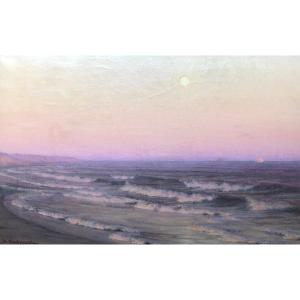The Odetta period (1925-1936) draws its inspiration from the primitivism which infiltrated all artistic fields in the 1925s. The Celtic origins of the Bretons have always been indicated in their art by decorative signs whose geometry is reminiscent of that found in African and Oceanian arts. The HB house chose stoneware for Odetta, which it skillfully enamelled with dark gray and blue colors, contrasting with the softness of celadon greens, ivory whites, or even the luminous shine of gold. To differentiate these works from classic production, they were produced from 1925 under the ODETTA brand (Ateliers de l'ODET). Many earthenware manufacturers then resort to the use of additional brands so as not to rush a conservative clientele who may be shocked by the novelty of abstract decorations. They call on artists, some of whom are already known. Among them, let us cite here Georges Brisson, Alphonse Chanteau, Louis Garin, René Olichon, Georges Renaud, Paul Fouillen, Abadie Landel... The Toulouse René Beauclair seems to be the most prolific decorator of ODETTA. This artist is already known for wallpapers characteristic of art nouveau, for creations of jewelry, furniture, wrought iron and paintings.






















 Le Magazine de PROANTIC
Le Magazine de PROANTIC TRÉSORS Magazine
TRÉSORS Magazine Rivista Artiquariato
Rivista Artiquariato
